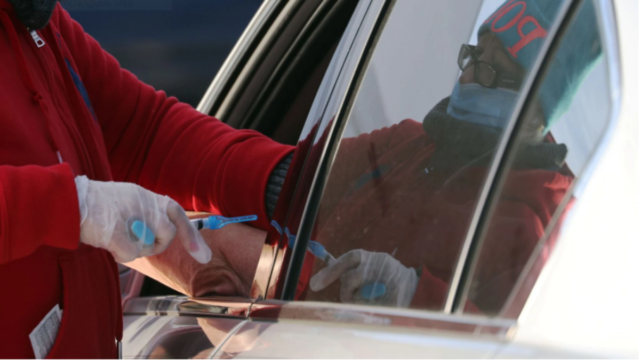The county’s public health committee decided last week to keep the level at orange but expressed concern that the rising threat of the omicron variant would require a change.

Dallas County’s public health committee has raised the COVID-19 threat level to red, or “high risk of transmission,” in response to a spike in cases and hospitalizations due in part to the omicron variant.
Last week, the committee chose to keep the threat level at orange but hinted that it may change as cases increased.
The threat level issues guidance for what people in the county should do to slow the spread of the virus but does not create any penalties for not abiding by them. Those include avoiding crowded spaces and wearing a mask indoors.
The county had not issued detailed guidance on the red threat level Tuesday evening. In a letter to Dallas County Judge Clay Jenkins, the public health committee asked commissioners to encourage the following actions:
- Increase vaccination and boosters to prevent severe illness and hospitalization
- Increase testing capacity to identify cases early
- Implement universal masking and physical distancing in public spaces
- Limit public gatherings to allow for distancing
- Encouraging masking, distancing and vaccination to combat omicron
The threat level was raised from yellow to orange in late June, and from orange to red in early August, in the midst of a spike in cases driven by the delta variant. It was lowered to orange again at the end of October.
Dr. Philip Huang, the county’s health director, told commissioners at a meeting last week that, although the trends of cases were concerning, the numbers did not yet justify raising the threat level. Still, he suspected the omicron variant would cause a serious spike in cases in the coming weeks.
“Everything we’ve seen is that this is extremely transmissible,” Huang said. “It’s very scary how rapidly this is spreading.”
Of particular concern, Huang said, is the effect that omicron has been shown to have on health care workers in other parts of the world. He said that, if nurses and doctors get sick, they would have to take time off, putting further strain on an already stressed system.
In the letter to Jenkins, the committee said that the positivity rate of COVID-19 tests has increased to 40% in some health care settings and that the county’s hospitalizations have gone up 50% in the last week.
“We understand that everyone is tired of the pandemic and wants to get back to normal and celebrate,” the committee wrote. “New Year’s gatherings, especially those in bar or other large indoor public settings, pose a substantial risk for spread in the community. We encourage everyone to celebrate at home, or in small private gatherings, utilizing pre-event testing, masking, physical distancing and ventilation strategies to reduce the risk of spread.”









